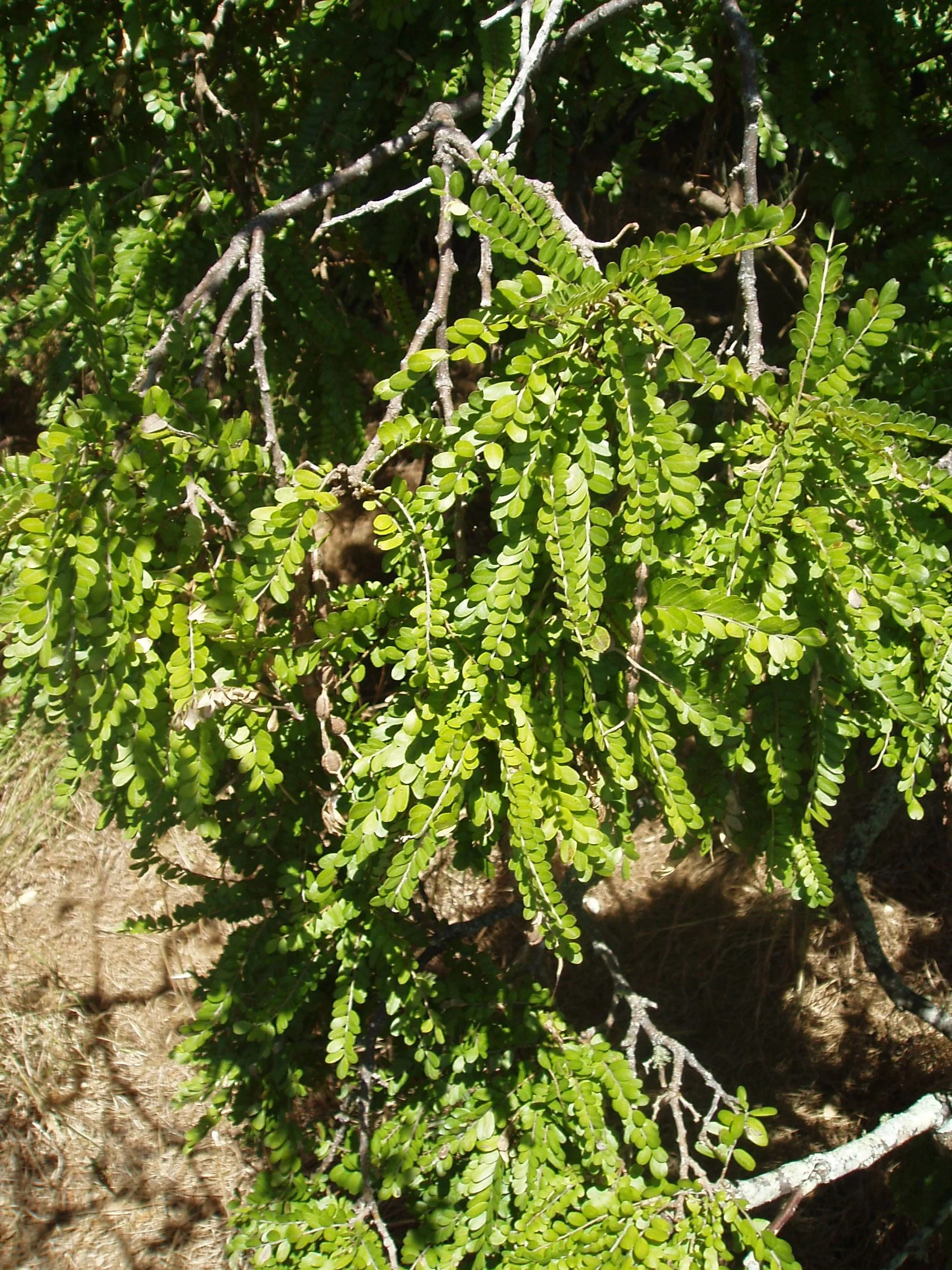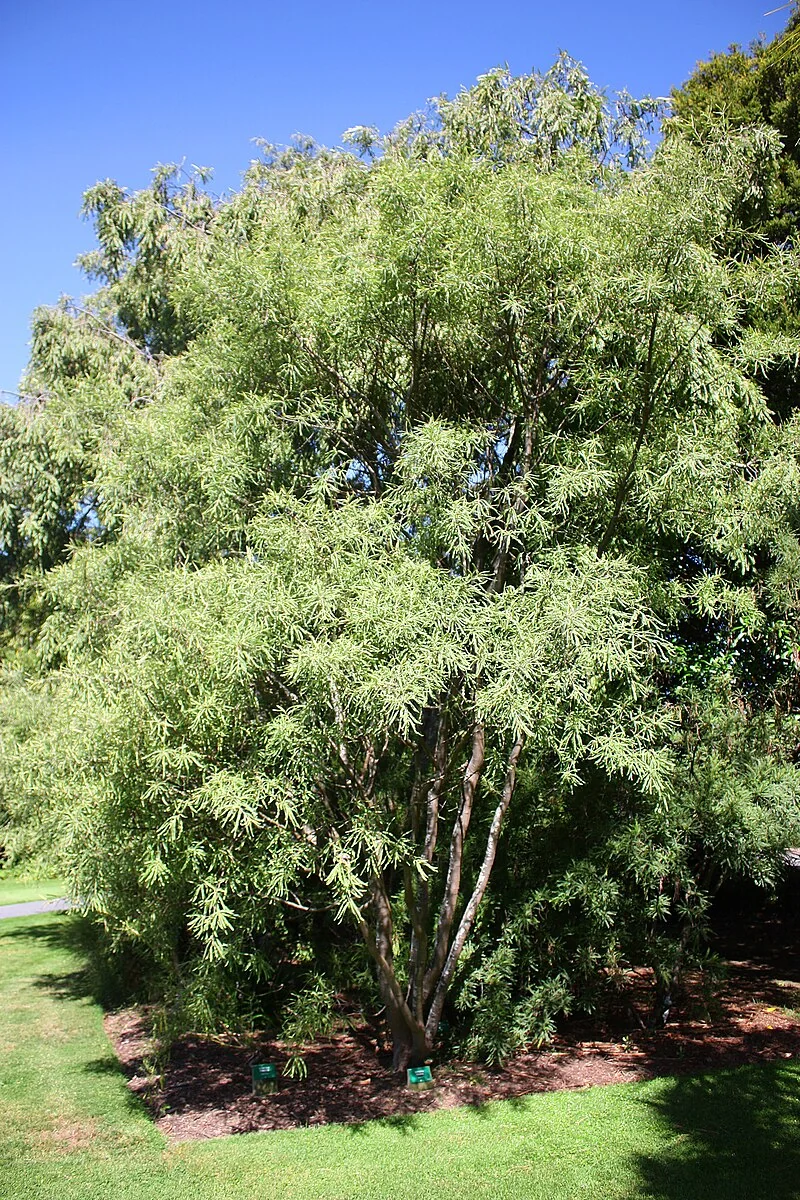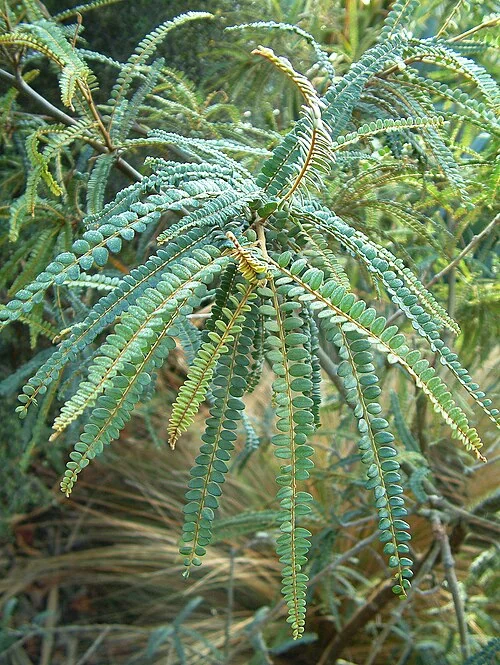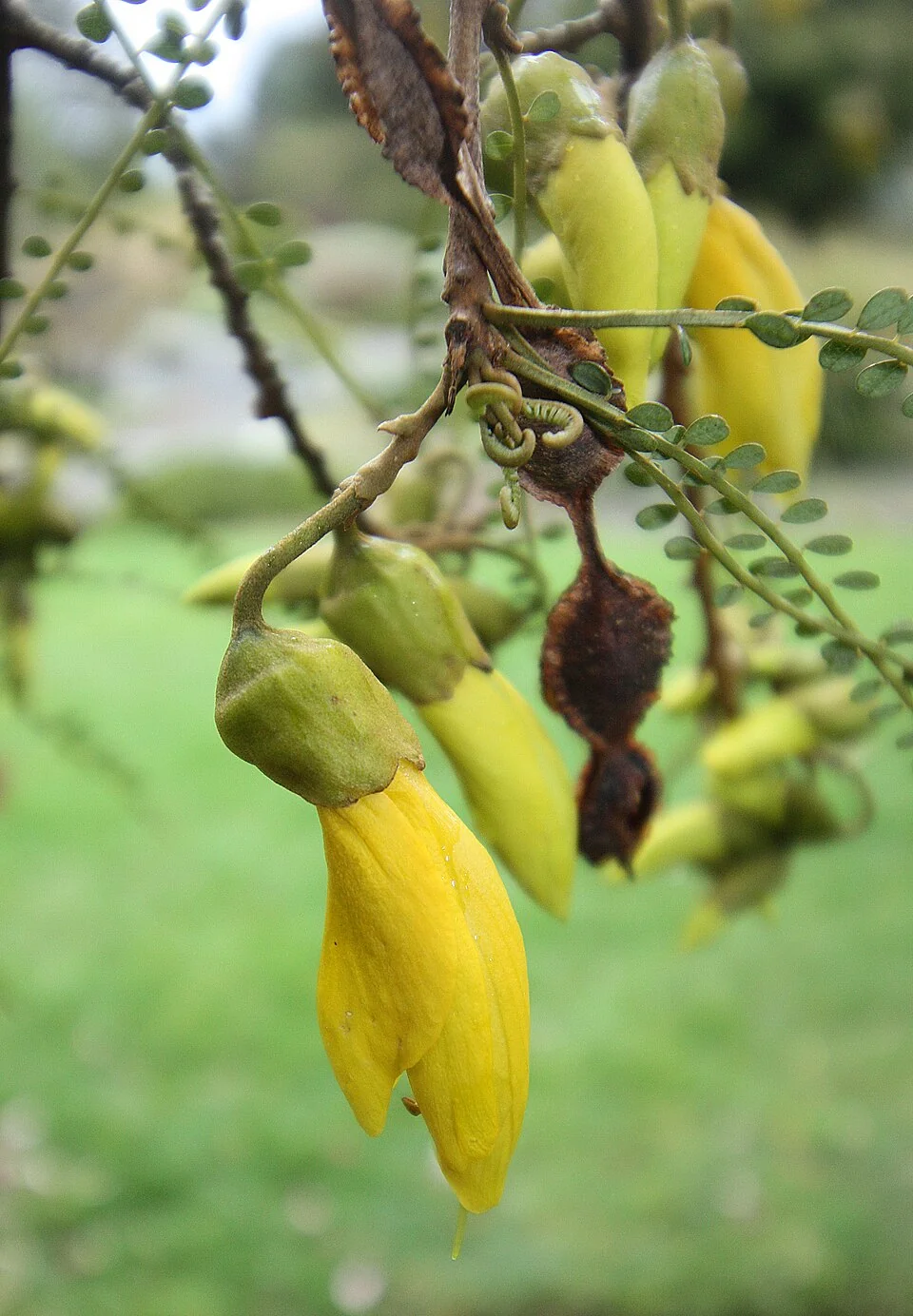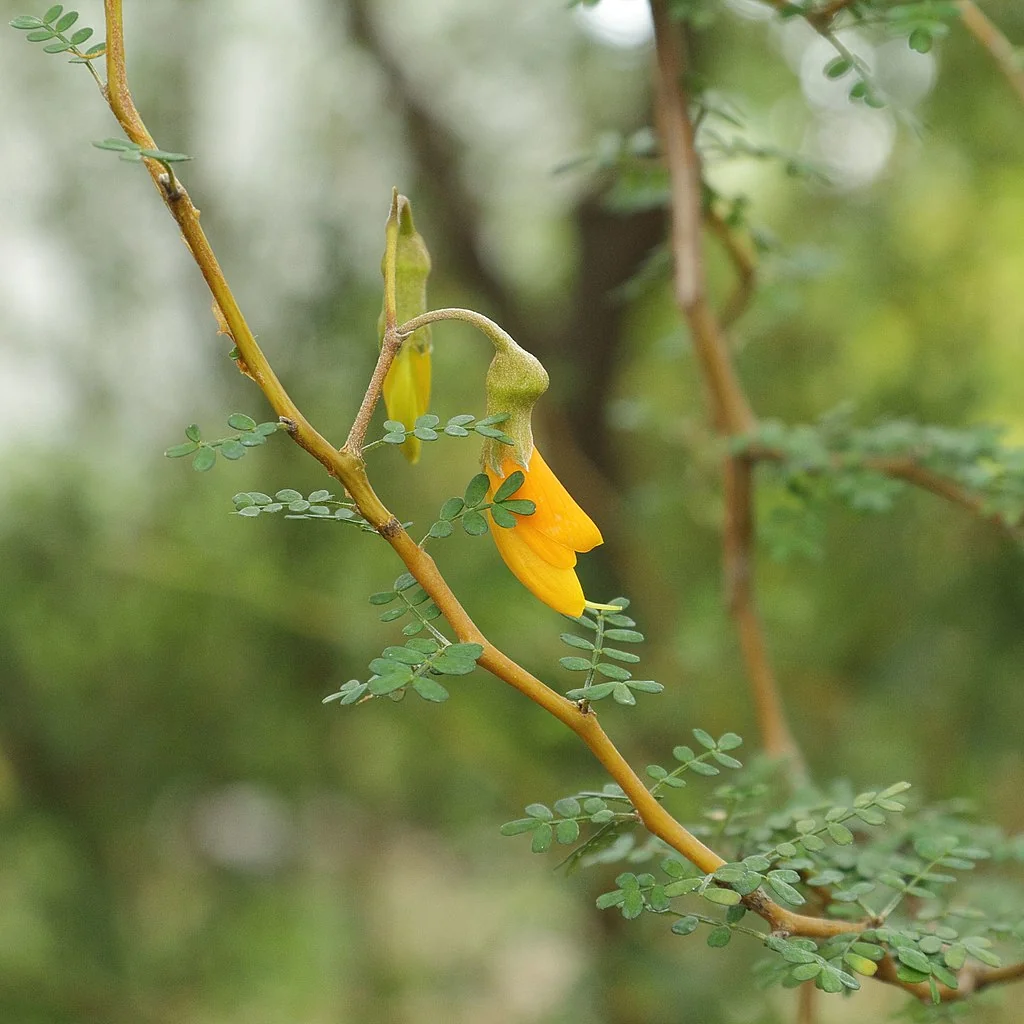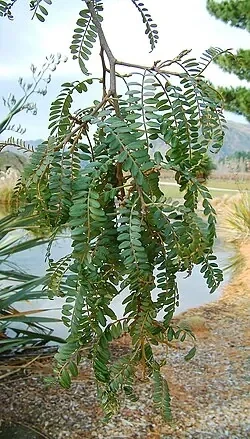
Large-leaved Kōwhai
Sophora tetraptera
Introduction
Large-leaved Kōwhai (scientific name: Sophora tetraptera ) is New Zealand's most robust kōwhai species, distinguished by its larger leaves and spectacular clusters of golden-yellow flowers. This magnificent native tree grows larger than other kōwhai varieties and is renowned for its hardiness, drought tolerance, and ability to thrive in a wide range of conditions. Found throughout New Zealand, it's a cornerstone species for wildlife gardens and plays a vital role in traditional Māori culture. Explore more in the native plants index .

Large-leaved Kōwhai ( Sophora tetraptera ) is a native species valued in gardens and restoration for its form and resilience in suitable conditions. Learn more about native trees in our native plants guide .
Plant Description
Botanical Features
Large-leaved Kōwhai ( Sophora tetraptera ) is an evergreen tree native to the central east of the North Island of New Zealand. It can grow up to 10-15 meters tall. Its leaves are typically 100-220 mm long, with 10-25 pairs of widely spaced, greyish-green leaflets that are 15-40 mm long. These leaflets are notably larger and more spread out than those of other kōwhai species. It produces showy, drooping clusters of yellow, pea-like flowers. These typically bloom from October (or as early as September) to December in New Zealand, or in spring and early summer in other regions. The flowers attract nectar-seeking birds and pollinators. Sophora tetraptera is a slow-growing tree. Juvenile plants exhibit an erect growth habit. It can have a slender form, giving it an elegant and airy appearance. It naturally occurs in coastal areas, and lowland areas beside rivers and lakes, and can also grow in ranges along rivers. Like other legumes, it can fix nitrogen in the soil through a symbiotic relationship with soil bacteria. The wood is compact, dense, heavy, and durable, used for various purposes.
Quick Facts
Essential Information
| Scientific Name | Sophora Tetraptera |
|---|---|
| Height | Up to 15 m |
| Spread | 5 - 8 m |
| Water Needs | Moderate; prefers moist soil |
| Light | Full sun to partial shade |
| Frost Tolerance | Moderate to high |
| Salt Tolerance | Moderate |
| Growth Rate | Moderate to fast |
| Lifespan | Long-lived tree |
Climate Best Suited to
Sophora tetraptera is found primarily in the North Island and northern South Island. It thrives in a range of climates, from coastal to lowland forest margins. It is more tolerant of warmer, wetter conditions than some other kōwhai species, but still appreciates good drainage.
Regional Suitability
| City | Climate Suitability |
|---|---|
| Whangārei | Ideal |
| Auckland | Ideal |
| Hamilton | Ideal |
| Tauranga | Ideal |
| Rotorua | Ideal |
| Gisborne | Ideal |
| New Plymouth | Ideal |
| Napier | Ideal |
| Whanganui | Ideal |
| Palmerston North | Ideal |
| Wellington | Ideal |
| Nelson | Ideal |
| Christchurch | Ideal |
| Dunedin | Ideal |
| Invercargill | Ideal |
Natural Habitat
Large-leaved Kōwhai ( Sophora tetraptera ) is an evergreen tree native to the North Island of New Zealand. Its natural habitat includes coastal forested areas, inland regions along rivers, and associated low scrub and forest.
Key Habitats Include:
- Coastal and Riparian Zones: It is frequently found around lake margins, particularly Lake Taupō, and on ignimbrite cliffs bordering the upper Waikato River. It also grows in coastal areas and lowland areas beside rivers.
- Lowland to Montane Forests: While primarily a lowland species, it can also grow in montane riparian forests, showcasing its adaptability to different elevations.
Preferred Conditions:
- Soil: It thrives in well-drained, moderately fertile soil and does not perform well on hard or waterlogged sites. It can tolerate heavier clay soils, but adequate drainage is essential.
- Light: It flowers best in full sun positions but tolerates partial shade.
- Tolerance: It is more tolerant of warmer, wetter conditions than some other kōwhai species, but still appreciates good drainage.
Distribution:
- North Island Concentration: Its distribution is concentrated in the eastern part of the North Island, stretching from East Cape south to the Wairarapa, and extending west towards Taihape, Lake Taupō, and along the Waikato River to about Lake Karapiro.
The presence of Sophora tetraptera in these diverse habitats underscores its ecological importance in contributing to the biodiversity and structural complexity of New Zealand's native forests, particularly in the North Island.
Plant Conservation
Sophora tetraptera , commonly known as large-leaved kōwhai, is a tree native to the central east of the North Island of New Zealand. It is widespread and common in its natural habitat, which includes coastal forested areas, riverbanks, and lake margins. As of 2023, Sophora tetraptera is classified as "Not Threatened" under the New Zealand Threat Classification System (NZTCS). While it is considered adequately protected within various reserves and conservation areas, a general threat to all wild New Zealand kōwhai species is the planting of hybrid materials, foreign species (such as the Chilean Pelu), or kōwhai species outside their natural distribution for revegetation and horticultural purposes. Kōwhai species play a vital ecological role, providing food and shelter for native birds and contributing to soil health by fixing nitrogen.
Growing Requirements
Soil Requirements
Large-leaved Kōwhai ( Sophora tetraptera ) thrives in well-drained, moderately fertile soil and does not perform well on hard or waterlogged sites. While it can tolerate heavier clay soils, adequate drainage is essential. This species naturally grows along lowland streamsides and forest margins, preferring rich, moist soils that don't become waterlogged. Incorporating organic matter like compost can improve drainage and fertility.
Light Requirements
Large-leaved Kōwhai flowers best in full sun positions but tolerates partial shade. Full sun promotes the most abundant flowering and robust growth. It can perform well in partially shaded locations while still producing abundant flowers. Morning sun is particularly beneficial for flowering.
Water Requirements
Large-leaved Kōwhai requires moderate to high water levels and is less drought-tolerant than Sophora microphylla. This species prefers consistent moisture, especially during establishment (the first few years) and benefits from regular watering during dry periods. Its natural streamside habitat indicates a preference for reliable water availability.
Planting Guide
Sophora tetraptera , also known as Large-leaved Kōwhai, is a New Zealand native tree prized for its vibrant yellow flowers. Here's a guide to planting and caring for it:
When and Where to Plant:
The best time to plant Sophora tetraptera is during spring or autumn when the weather is mild and the soil is moist. Choose a location that receives full sun for the most abundant flowering and robust growth, though it can tolerate partial shade, especially in hotter or drier regions. A sheltered position is also recommended. Avoid planting too close to structures that might be affected by its mature size, which can reach up to 12 meters in height and 4-6 meters in spread.
Soil Requirements:
Sophora tetraptera thrives in well-drained, fertile soils. It is adaptable to various soil types, including clay, loam, and sandy soils, as long as drainage is good. The ideal soil pH is slightly acidic to neutral (6.0-7.5). If your soil is heavy or poorly drained, amend it with organic matter like compost or well-rotted manure to improve drainage and fertility.
Planting Steps:
- Dig a hole that is at least twice the width of the root ball and slightly deeper.
- Loosen the soil at the bottom of the hole to promote healthy root development.
- Place the Sophora tetraptera in the hole, ensuring it is planted at the same depth it was in the nursery to prevent root rot.
- Backfill the hole with soil and water thoroughly.
- Apply a layer of mulch around the base of the tree to help retain moisture, suppress weeds, and regulate soil temperature. Keep the mulch a few inches away from the trunk to prevent moisture buildup and potential rot.
Watering:
During its first growing season, water regularly to keep the soil consistently moist but not waterlogged. Once established, Sophora tetraptera is relatively drought-tolerant, but regular watering during extended dry periods will encourage healthy growth and flowering.
Pruning:
Light pruning can be done after flowering to maintain the tree's shape and remove any dead or damaged branches. Alternatively, pruning can be done in late winter or early spring, just before new growth begins.
Fertilization:
In early spring, consider applying a balanced, slow-release fertilizer formulated for trees to provide essential nutrients gradually. Avoid over-fertilizing, as this can lead to excessive leaf growth at the expense of flower production.
Propagation:
Sophora tetraptera can be propagated from fresh seeds or semi-hardwood cuttings taken in summer. Seeds should be pre-soaked in hot water before sowing.
Pests and Diseases:
This species is generally resistant to most pests and diseases due to its native adaptations. However, it may rarely be susceptible to honey fungus.
Ecological Role
Seasonal Nectar Pulse
Large-leaved kōwhai ( Sophora tetraptera ) delivers a strong early-spring nectar and pollen resource, drawing in tūī, korimako/bellbird, and native bees. The showy, paired flowers are an important cue in coastal-eastern forest food webs.
Dispersal and Soils
Distinctive four-winged pods aid seed transport by water and wind along river systems and hill country. Root nodules fix atmospheric nitrogen, lifting fertility on stony, drought-prone sites and supporting mixed native shrubland development.
Uses and Significance
A Garden Favourite
- Specimen Tree: Its vibrant flowers and attractive form make it an excellent specimen tree for gardens and parks.
- Wildlife Garden: The abundant nectar-rich flowers are a magnet for native birds like tūī and bellbirds, and the seeds are eaten by kererū.
- Cultural Importance: Like all kōwhai, it holds cultural significance for Māori, symbolising new beginnings and often associated with the arrival of spring.
- Rongoā (Traditional Māori Medicine): The bark and leaves were used in traditional medicine, though all parts of the plant are poisonous if ingested.
Landscaping Ideas
Sunny Specimen
Large-leaved kōwhai forms a rounded crown ideal for lawns and open borders. Its generous spring bloom suits pollinator-focused plantings and farm shelter belts in mild regions.
Seasonal Care
Large-leaved Kōwhai ( Sophora tetraptera ) is a fast-growing and adaptable native tree, known for its spectacular spring flowering. Providing consistent care, especially regarding moisture, will ensure its vigorous growth and health.
Spring
- Flowering: Spring brings the magnificent flowering display of Large-leaved Kōwhai, typically blooming from mid-spring to early summer.
- Planting: This is an excellent time for planting new trees, allowing them to establish before the summer heat.
- Fertilizing: If growth appears poor, a light application of a balanced fertilizer can be beneficial.
- Protection: Young trees should be protected from strong winds, which can damage delicate new growth.
Summer
- Watering: Consistent watering is crucial during summer, as this species is less drought-tolerant than other Kōwhai. Regular watering is essential, especially for young trees.
- Mulching: Apply mulch around the base to help retain soil moisture and regulate temperature.
- Pest Monitoring: Monitor for Kōwhai moth caterpillars, which may defoliate branches but rarely cause permanent damage to healthy trees.
Autumn
- Planting: Autumn is another good planting time as temperatures moderate, allowing roots to establish before winter.
- Leaf Drop: Trees may lose some leaves in colder climates as they prepare for winter.
- Seed Collection: Collect mature seeds for propagation. Remember they will need scarification before sowing.
- Watering: Reduce watering frequency as growth slows, but maintain adequate soil moisture.
Winter
- Dormancy: Winter is generally a dormant period with reduced growth.
- Frost Protection: Young trees are more susceptible to frost damage than Sophora microphylla and should be protected from heavy frosts.
- Watering: Reduce watering but ensure established trees don't completely dry out.
Pruning
Techniques and Timing
Large-leaved Kōwhai ( Sophora tetraptera ) generally requires minimal pruning as it naturally develops an attractive tree form. Most maintenance involves removing dead, damaged, or crossing branches and light shaping if desired for a more compact form.
- Maintenance Pruning: Remove dead, damaged, or diseased wood as needed. This can be done at any time of year.
- Formative Pruning: Young trees may benefit from formative pruning to establish a strong central leader and a well-balanced canopy.
- Timing: Prune after the flowering period (typically early summer) to avoid cutting off flower buds and to allow the tree to recover before its next growth flush.
- Shaping: Light pruning can encourage a more compact form if desired, but avoid heavy pruning which can reduce flowering.
- Avoid Heavy Pruning: While Kōwhai tolerates pruning, avoid heavy or drastic cuts, as this can stress the tree and reduce flowering. Its natural tree form is generally most attractive.
- Tools: Always use clean, sharp tools when pruning to prevent disease transmission.
How to Grow Large-leaved Kōwhai
Large-leaved Kōwhai ( Sophora tetraptera ) is New Zealand's most robust kōwhai species, distinguished by its larger leaves and spectacular clusters of golden-yellow flowers. This magnificent native tree grows larger than other kōwhai varieties and is renowned for its hardiness, drought tolerance, and ability to thrive in a wide range of conditions. Found throughout New Zealand, it's a cornerstone species for wildlife gardens and plays a vital role in traditional Māori culture. Understanding its propagation methods is key to successfully cultivating this beautiful native tree.
From Seed
Propagating Large-leaved Kōwhai from seed is a popular and generally reliable method, provided the seeds are properly treated. Kōwhai seeds have a very hard coat, which prevents water absorption and inhibits germination. To encourage germination, the seed needs to be scarified (nicked or sanded) to break this dormancy. After scarification, soak the seeds in warm (not boiling) water for 12-24 hours; viable seeds will swell. Sow the treated seeds into a sterile, free-draining mix at about 5-8 mm depth and keep evenly moist in bright, indirect light at temperatures between 15-22 °C. Germination is usually reliable after pretreatment, typically occurring within a few weeks. Once seedlings have developed a few true leaves and are stable, carefully prick them out into individual small pots, minimizing root disturbance. Grow them on in a sheltered environment with good light and steady moisture before gradually hardening them off for planting out.
From Semi-Hardwood Cuttings
Semi-hardwood cuttings of Large-leaved Kōwhai can be taken in late spring to summer from healthy, non-flowering shoots. Select cuttings that are 8-12 cm long. Remove the lower leaves, reduce the remaining leaf area by half, and make a clean basal cut just below a node. Treat the cut end with an IBA (Indole-3-butyric acid) rooting hormone to stimulate root development. Insert the cuttings into a very free-draining medium (e.g., coarse perlite with fine bark) under high humidity (e.g., a mist bench or covered propagator), bottom heat around 18-22 °C, and bright filtered light. Keep the medium moist but not waterlogged. Rooting can be slow and variable, often taking several months. Pot on only once a firm root system has formed, and then gradually acclimatize the new plants to outdoor conditions. This method is generally more successful for experienced propagators or in specialized nursery settings with controlled environmental conditions.
Pests and Diseases
Kōwhai Moth
Similar to other kōwhai species, it can be affected by the kōwhai moth caterpillar, which can defoliate the tree. Healthy trees typically recover well.
Cultural Significance
Traditional Uses and Values
Sophora tetraptera , commonly known as kōwhai, holds profound cultural significance for Māori communities in New Zealand. It is considered a symbol of strength, courage, spring, and renewal. Historically, Māori utilized various parts of the kōwhai tree. The durable, elastic, and tough wood was used for a wide array of practical purposes, including crafting wedges for splitting wood, constructing fences and whare (houses), and making implements and weapons such as k , patu, eel spears, and taiaha. Its roots were also carefully selected to create large fish hooks. Infusions made from kōwhai bark were widely used in traditional Māori medicine as a purgative, and to treat conditions like scabies, sprains, bruises, tumors, wounds, gonorrhea, ringworm, colds, and sore throats. The yellow flowers were also applied to treat colds and skin infections. The flowers, seedpods, twigs, and bark of the kōwhai tree were used to produce dyes ranging in colour from yellow to brown. Beyond its practical uses, kōwhai continues to be important in contemporary Māori culture and environmental stewardship. Its cultural significance is further highlighted by its appearance in various forms of art, postage stamps, and coins. Kōwhai is also recognized as the national flower of New Zealand. It is crucial to remember that all parts of the kōwhai plant, particularly the seeds, are poisonous.
Bonus Tip
Expert Growing Advice
Large-leaved kōwhai sets heavy pods; leave them to ripen fully for viable seed. Prune lightly after flowering and grow in an open, sunny position for the best display.
